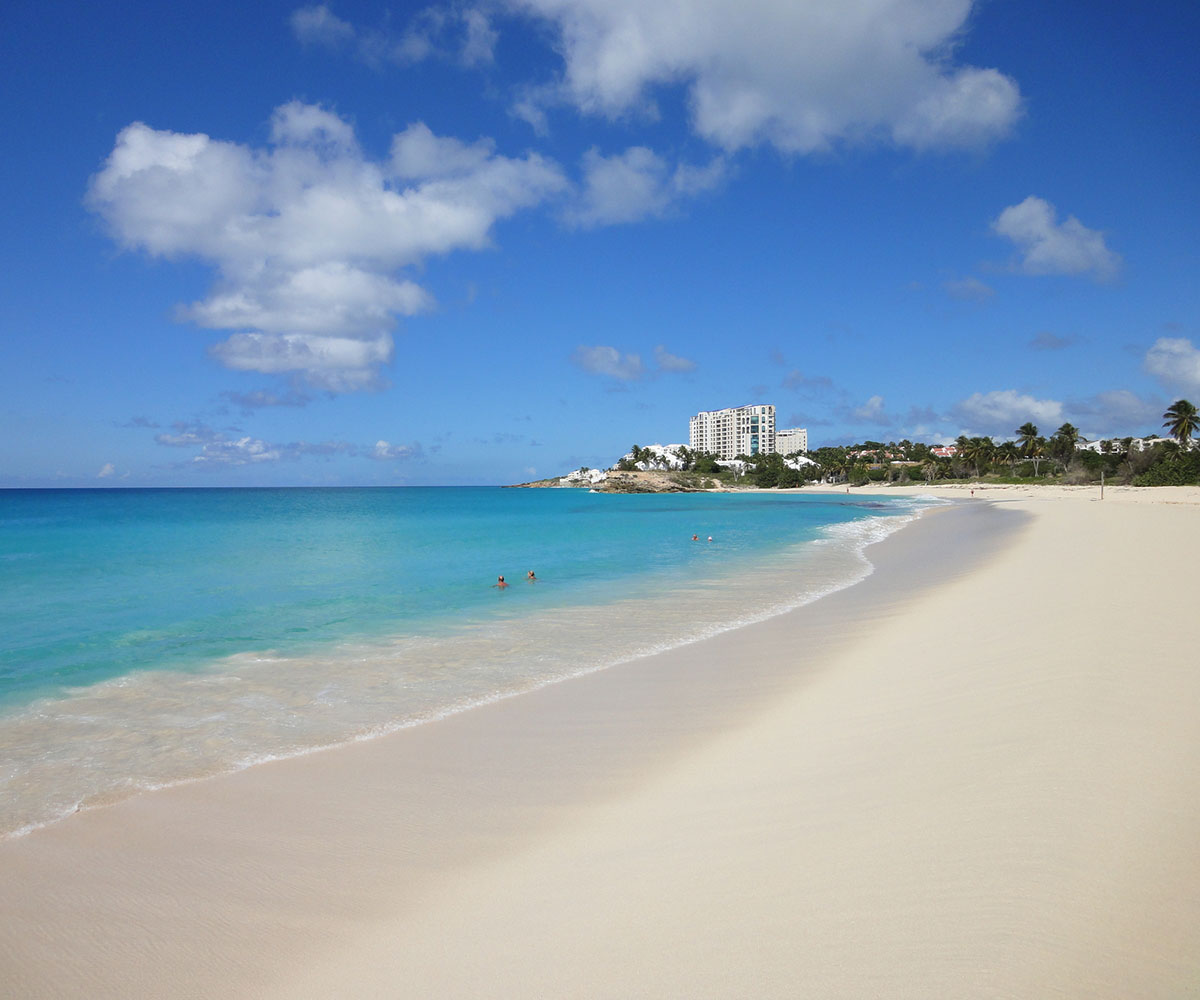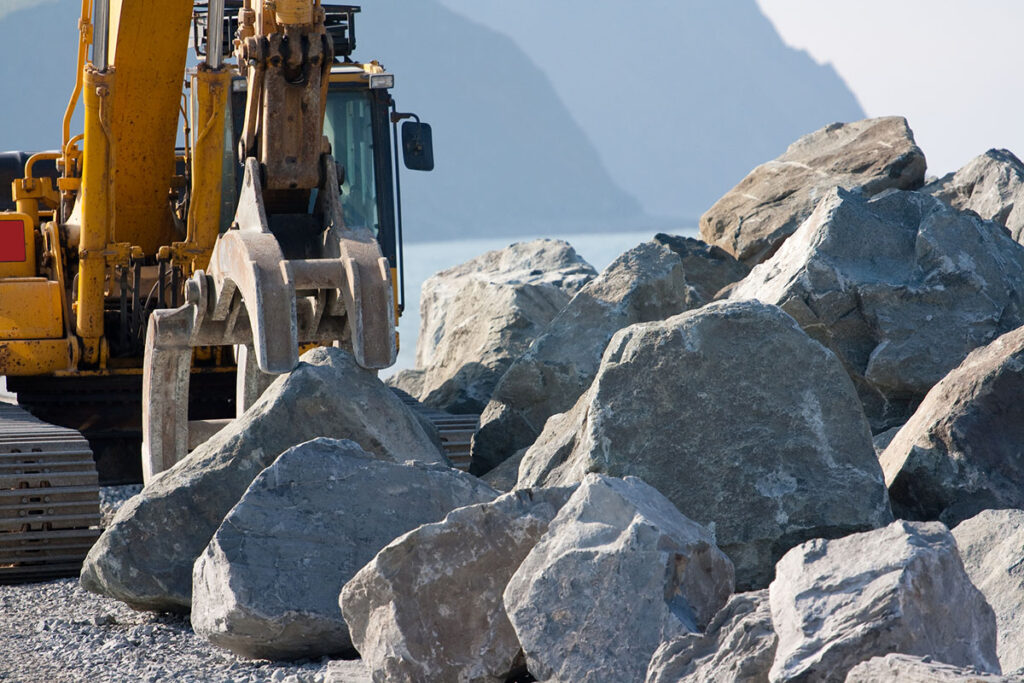Risks sea level rise poses to Caribbean ports
Jesper Goodley Dannisøe** and Jan Sierhuis*
The global accord reached in Paris, France, on December 12, 2015, sets goals for diminishing risks associated with climate change. The aim of the agreement between most countries of the world is to reach a global peak and then achieve a balance between greenhouse gas emissions and removal of those gases by the second half of this century. The political goal is to keep the global average temperature increase to significantly less than 2°C above pre-industry levels. Indeed, the aim is to keep the global average temperature to less than 1.5°C. This would significantly reduce the risks and impact of climate change in most parts of the world. However, although the Paris declaration is a major step forward, climate change occurs and its effects are felt more acutely in low lying coastal zones, like the Caribbean. These effects can be potentially disastrous, due to specific natural and socio-economic pressures that exist in the Caribbean. This article explores these pressures and presents some practical tools to mitigate some of the more serious effects on Caribbean ports. It is PORTSIDE CARIBBEAN’s contribution to a regional discussion about climate change. No single port acting alone can solve the problem. Solutions and strategies are to be discovered through dialogue, cooperation and strong partnerships locally, regionally and globally. – Ed.
The Organization of American States (OAS) report Climate Change Impacts on Land Use Planning and Coastal Infrastructure, prepared by the National Ocean Service (NOS), [ww.oas.org/macc/Docs/LUPInfrastIssues.doc], provides useful insight as to why climate change impacts the Caribbean so severely. It helps us to understand the specific risks rising sea levels pose to Caribbean ports.

Caribbean port systems are vulnerable to climate change because of a combination of natural and socio-economic realities. These include the reality that the Caribbean is in the hurricane belt. The socio-economic change from agriculture to seaside tourism, combined with a lack of integrated urban and coastal planning policies, as well as the cultural disposition and freedom of property owners to develop land for short-term profit. On most islands, ports are traditionally located on the seaside. And, in the last 50 years, many ports have become surrounded by unchecked tourism development. In many cases, ports have embarked on extensive tourism-related infrastructure development.
In addition, many Caribbean islands have large expanses of low-lying land that are vulnerable to sea level rise.

Short-term profits and local jobs stimulated most of these investments and populations moved from higher ground under agriculture to lower coastal areas where tourists inhabit. Illegal construction in coastal areas and wetlands is widespread and sewage treatment is either low cost (e.g. septic tanks) or non-existent. Many hotels and urban projects in the Caribbean dispose of largely untreated waste directly into coastal waters. This practice killed a large portion of the ‘natural shock absorbers,’ including reef systems, mangrove areas and seabeds. Unchecked beach and land-claiming programmes added to the onslaught, either by taking sand away where it is naturally required or putting it where it does not belong. The results: Caribbean coastal areas are overcrowded (high population density); and their natural protection has been destroyed or is in very poor condition.
When the sea levels rise and increasingly frequent and more severe storms occur, damage is more likely to disrupt entire communities and undermine the economic base of the country. This is the real threat: well-built, sustainable ports may survive. However, if the country does not survive, the port will suffer with it. Hence, the Caribbean Climate Change Impact’s port agenda is twofold: how do we build new or existing sustainable ports and how do we show our communities the way to survival?
Lowering risks
Lowering the risks requires full community participation and ports are in an excellent position to create awareness and to lead the way. Risk management should be an integral part of coastal infrastructure planning and zoning is the key word here. Ports can use zoning to direct, or redirect, high risk port activities to lower risk port areas and move working and storage areas to such zones. Incentives, for example lower rent and reduced insurance premiums, could be offered for relocation away from coastal areas.
Moving cargo storage and terminal reception areas beyond historic high-water lines reduces the risk to life and to the economy. Making sure that untreated sewage and wastewater in these areas do not end up in the sea helps to protect and restore the natural shock absorbers in and around the port. If untreated wastewater is being discharged into the sea, monitoring and measuring the process in order to initiate corrective measures to protect reefs and mangroves is absolutely essential.
Where high risk investments are to be allowed in higher risk areas, there should be tight regulations for building and for water management and waste treatment. A premium may be imposed on such investments in order to generate the necessary funding for monitoring natural shock absorbers and financing their restoration. This can be done either by inserting clauses to lease agreements or by stipulating specific insurance coverage.

Tourism
Ports engaged in tourism-related development are well-positioned to lead the way for sustainable tourism. Limiting land reclamation for constructing or expanding hotels and beach-front properties and moving high-risk activities to lower-risk zones is an excellent strategy to demonstrate that sustainable tourism is feasible and profitable.
Operators of tourism facilities in port areas should contribute in a real way to reef and water quality monitoring and restoration programmes and should be involved in dialogue as to how adjacent port property is developed. This ensures that their business is protected for the longer term and makes them happy investors.
Developing a sustainable port
In the spirit of the Accord, and the declaration of 195 countries at the 21st Conference of the Parties to the United Nations Framework Convention on Climate Change (COP21) in December 2015, port authorities and port managers, as a matter of urgent policy, must look very carefully at every resource that the port uses to identify areas where the carbon footprint of the port can be reduced.
It is very important that these our assessments and recommended action are implemented with close cooperation between the management and all the staff in order to be a success and not used as a tool to monitor any single employee or department.
Water
Fresh water is a limited resource. With Climate Change this resource may become even more scarce if we do not include fresh water produced through desalination. And desalination requires high energy consumption. To enable better management of water, it is necessary to monitor all water consumption in the port.
Consumption must be identified in terms of specific use with drinking water being the most important.
The simplest approach is to report water used in the port under two sub-headings: water for human consumption and the rest. Many ports export a lot of water when bunkering ships with drinking water. The price for the water should mirror the actual costs for producing and transporting that water and should include an additional amount to cover costs for maintenance and future development. This is known as the full cost-recovery price.
It is suggested that the port establish meters on the main source entering the port and at all user-points so as to measure water for the administration buildings, for canteens and other places where staff use or consume water. Other non-potable points should also be metered. Smart-meters can constantly send information about rate of consumption and are invaluable to detect costly leaks in the system. Every litre lost through leakage carries a cost which has to be paid in bills from the water supply company. And every litre of water lost is also a loss in energy from production and pumping.
Annual assessments of the water consumption in a port will enable the management to put control on those areas where water, for one reason or another, is not utilized optimally. In addition to the capability to map and manage use, effective metering and monitoring can lead to a significant reduction in water consumption and utility bills. It may also reveal that the way the “necessary” water is being used is not optimal. An example is water used for flushing.
A pier using normal hoses may be better served by high-pressure water jets which use much less water. However, a high-pressure jet system uses extra energy. These are factors to be weighed.
The COP21 Paris declaration had a special focus on all activities which cause emission of CO2, the key driving factor for the increase in global temperature. Ports are themselves energy consumers. We suggest making an energy budget for the port, based on types (of energy) used and for what purposes: tons of gasoline; tons of diesel fuel; electricity (kilowatt hours). Carbon emissions generated by different energy types can be calculated. With an energy budget, the port will have an overview of the annual release of CO2.
An energy audit can then be used to assess and quantify specific uses and generate information as to whether new types of equipment would lower emissions. The pay-back time for investing in new equipment may help to make the right decision that leads to lower CO2 emission and thus contribute to a global reduction in the release of green-house gasses. Solar energy should also be considered as the unit-price for solar panels is constantly falling.

Sea level rise
Caribbean ports must be constantly aware of risks they pose to climate change. This requires on-going environmental measurement and risk management programmes.
By zoning port property into low and high-risk areas and concentrating higher risk activities in lower risk areas, port managers can effectively limit damage to the environment and better protect their property.
Although in a national context some ports may be regarded as small players, their operations may contribute to the release of greenhouse gasses and other pollutants. Every port must therefore contribute to a healthier world by completing the recommended analyses and assessments to provide a knowledge base upon which they can plan responses that contribute to reducing the danger of the temperature increase and the potential of being consumed by rising sea levels. []
- First published February 1,2016

*Jan Sierhuis, Director, Maritime Authority of Curacao (maritimecuracao@gmail.com)

** Jesper Goodley Dannisøe, Senior Project Manager, DHI Denmark (jda@dhigroup.com)





